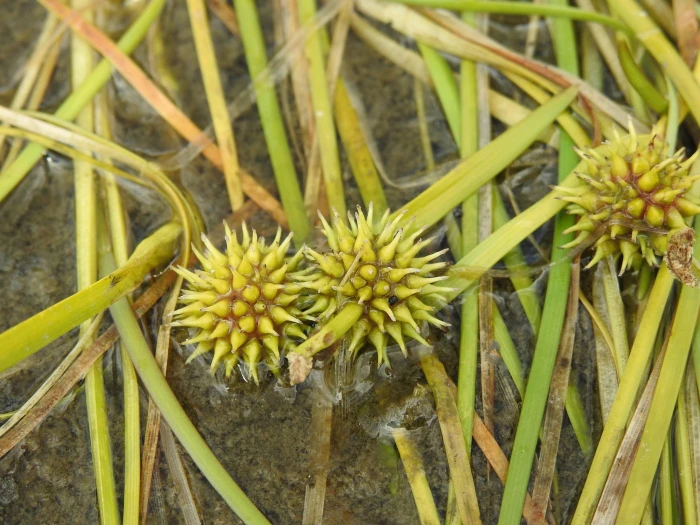Floating Bur-Reed
(Sparganium angustifolium)
Floating Bur-Reed (Sparganium angustifolium)
/
/

Yves Bas
CC BY 4.0
Image By:
Yves Bas
Recorded By:
Copyright:
CC BY 4.0
Copyright Notice:
Photo by: Yves Bas | License Type: CC BY 4.0 | License URL: http://creativecommons.org/licenses/by/4.0/ | Rights Holder: Yves Bas | Publisher: iNaturalist | Date Created: 2022-08-07T11:20:01-07:00 |

























Estimated Native Range
Climate Requirements for Spring, Texas
| This Plant | Your Site | Plant Suitability for Your Location | ||
|---|---|---|---|---|
| • Precipitation | 6" - 188" | 46" | Aquatic | Aquatic |
| • High Temp. | 33°F - 94°F | 94°F | Your summer temperatures are normal for this plant. | Excellent |
| • Low Temp. | -53°F - 42°F | 41°F | Your winter temperatures are normal for this plant | Excellent |
This plant should grow well at your location with about N inches per year (Y minutes per month) of irrigation.
Summary
Sparganium angustifolium, commonly known as Floating Bur-Reed, is an aquatic perennial herb that is native to cool temperate regions of the Northern Hemisphere, including North America, Europe, and Asia. It is typically found in shallow, acidic, low-nutrient freshwater bodies such as ponds, lakes, slow-moving streams, and marshes. Floating Bur-Reed can grow in water up to 8 feet deep and often forms dense mats on the water surface. This plant reaches lengths that can exceed two meters, with long, narrow, flattened leaves that float on the water’s surface. The spherical male and female inflorescences are greenish-brown and not particularly showy, but they are distinctive and add textural interest to water gardens.
Floating Bur-Reed is valued for its ability to provide habitat for aquatic wildlife and for its use in water purification within garden ponds and natural water bodies. It is often used in naturalistic water features and for erosion control along water edges. In cultivation, it requires an aquatic environment and can tolerate a range of light conditions from full sun to partial shade. While it is not prone to many diseases, care should be taken to manage its growth as it can become invasive in some conditions, potentially outcompeting native species.CC BY-SA 4.0
Floating Bur-Reed is valued for its ability to provide habitat for aquatic wildlife and for its use in water purification within garden ponds and natural water bodies. It is often used in naturalistic water features and for erosion control along water edges. In cultivation, it requires an aquatic environment and can tolerate a range of light conditions from full sun to partial shade. While it is not prone to many diseases, care should be taken to manage its growth as it can become invasive in some conditions, potentially outcompeting native species.CC BY-SA 4.0
Plant Description
- Plant Type: Herb
- Height: 0.7-3.3 feet
- Width: 1.6-3.3 feet
- Growth Rate: Moderate
- Flower Color: Green, White
- Flowering Season: Summer, Fall
- Leaf Retention: Deciduous
Growth Requirements
- Sun: Full Sun, Part Shade
- Water: High, Aquatic
- Drainage: Standing
Common Uses
Erosion Control, Low Maintenance, Water Garden
Natural Habitat
Native to shallow, acidic, low-nutrient freshwater bodies such as ponds, lakes, slow-moving streams, and marshes
Other Names
Common Names: Narrowleaf Bur Reed, Narrowleaf Burr Reed
Scientific Names: Sparganium angustifolium, ? borderei, Sparganium affine, Sparganium affine f. deminutum, Sparganium affine f. microcephalum, Sparganium affine subsp. borderei, Sparganium affine subsp. borderei, Sparganium affine subsp. borderi, Sparganium affine subsp. borderi
GBIF Accepted Name: Sparganium angustifolium